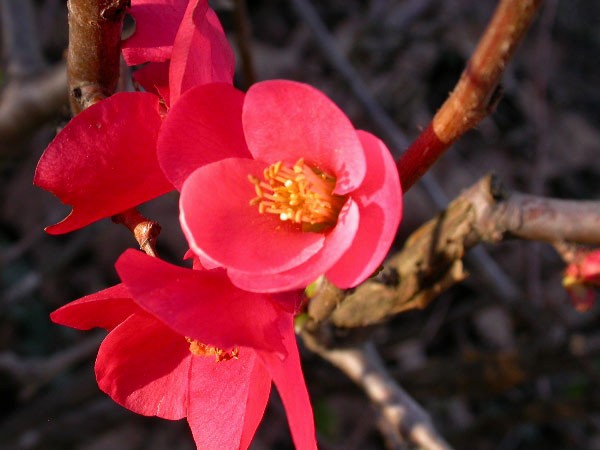Chaenomeles hybrids
 flowering quince
flowering quince
An upright shrub, flowering quince is among the earliest campus woody plants to bloom each year (January to February, before putting out leaves). Some plants have thorns, some are thornless. Leaf stipules are large, kidney-shaped, clasping the stem. ‘Stanford Red’, drought tolerant but also accepting regular watering, is commonly planted, and can be seen along Galvez Street and on Campus Drive at the Track House. Also see flowering quince in the parking strip for several blocks of Mayfield Avenue, south of Campus Drive.
The name is from the Greek chainein, to split, and malea, apple: the fruit was supposed by Thunberg to split into five valves. (Carl Thunberg, Flora Japonica, 1784.)
Three species of Chaenomeles from China and Japan: C. speciosa (showy) arrived in Britain in 1784; japonica in 1869; and lastly cathayensis. Originally placed in the genus Pyrus, and often included in Cydonia, its serrate or crenate chartaceous leaves and connate styles distinguish it from Cydonia oblonga. (Bailey, The Standard Cyclopedia of Horticulture, 1925.)
Illustrations: habit (John Rawlings, 11 Jan 2005).
About this Entry: The main text of this entry is from the book Trees of Stanford and Environs, by Ronald Bracewell, published 2005, with name derivation and other species notes added by John Rawlings ca. 2006.




